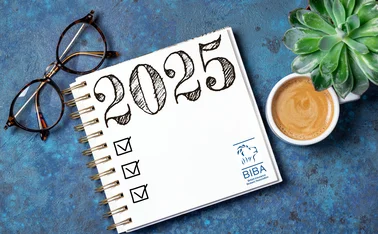
In-depth - Sport & leisure: Slips and trips

Lee Brett looks at some of the ways brokers can help clients minimise the risk of these common accidents
Slips and trips are the most common cause of workplace accidents, and frequently lead to public liability and employers’ liability claims. For instance, in 2018 slips, trips and falls made up 31% of non-fatal employee injuries reported to the Health and Safety Executive (HSE).
The sports and leisure industry is particularly vulnerable to slip and trip claims with various surfaces both indoors and outdoors; potentially unsuitable footwear and dark lighting in some areas. It’s one of the top causes of loss we see at Zurich for these businesses.
There are methods and procedures which can be implemented to help minimise the risk of slips and trips. As with all potential risks, it’s important to properly assess the risk you may face and to implement necessary precautionary measures.
The potential for slips and trips can be reduced by the careful selection of materials, appropriate facilities’ lay-out, etc. For example, to quote the HSE’s Managing health and safety in swimming pools (HSG179), “slip and trip hazards can be reduced by good design. Surface roughness, moisture displacement, the profile and surface pattern of the finish and foot-grip, all affect slip resistance”. Moving outdoors, the British Standard for playgrounds (BS EN1176) places great importance on the selection of safer surfacing.
Regarding existing facilities, here are 10 simple practical tips to help your clients minimise their risk:
- Ensure you have identified all areas that fall under your responsibility, including footpaths, corridors in and outside your buildings. For example pathways to a car park–- are these your client’s responsibility?
- Maintain floors, walkways, steps, ramps, handrails and lighting in a suitable condition, using appropriate matting at entrances. Recessed mats often wear down over time, leading to the recess edge becoming a trip hazard.
- Maintain good standards of housekeeping, e.g. ensure materials and equipment left on the floor are not causing an obstruction. Facilities such as sports pavilion changing rooms should be cleaned regularly to remove mud, grass and water.
- Improve layouts to ensure clear visibility and safe movement around the premises. Wherever possible customers should be able to walk the safest shortest route through high risk areas such as swimming pools.
- Implement a winter maintenance programme, including procedures for removing snow and ice from footpaths, steps and car parks. Don’t forget that snow can be tracked into reception areas, etc. on footwear, so ensure you place signs on any slippery floors. However, prompt remedial action should be taken once practicable – don’t rely unduly on the signs.
- Adopt robust spill response procedures for floors and stairs.
- Ensure you use cleaning methods appropriate for the type of flooring – and clearly signpost the exclusion of pedestrians until work is complete.
- Inspect all floor surfaces regularly, and promptly rectify any defects identified. This applies to indoor and outdoor areas, both standard surface such as footpath and specialist items such as waterslides and artificial ski slopes. Similarly, encourage reporting of defect by staff and visitors. Retain records of inspections and repairs.
- Ensure your staff wear appropriate footwear - it’s easy to assume.
- Identify any specific regulations or guidance that may also apply to your organisation visit www.hse.gov.uk for more detail.
Our Zurich Risk Engineers work with brokers and their clients regarding a wide array of risk management and mitigation strategies. We have extensive experience dealing with customers of all sizes and different risk profiles.
Lee Brett is principal risk consultant, Zurich Risk Engineering UK
Only users who have a paid subscription or are part of a corporate subscription are able to print or copy content.
To access these options, along with all other subscription benefits, please contact info@insuranceage.co.uk.
You are currently unable to print this content. Please contact info@insuranceage.co.uk to find out more.
You are currently unable to copy this content. Please contact info@insuranceage.co.uk to find out more.
Copyright Infopro Digital Limited. All rights reserved.
As outlined in our terms and conditions, https://www.infopro-digital.com/terms-and-conditions/subscriptions/ (point 2.4), printing is limited to a single copy.
If you would like to purchase additional rights please email info@insuranceage.co.uk
Copyright Infopro Digital Limited. All rights reserved.
You may share this content using our article tools. As outlined in our terms and conditions, https://www.infopro-digital.com/terms-and-conditions/subscriptions/ (clause 2.4), an Authorised User may only make one copy of the materials for their own personal use. You must also comply with the restrictions in clause 2.5.
If you would like to purchase additional rights please email info@insuranceage.co.uk








